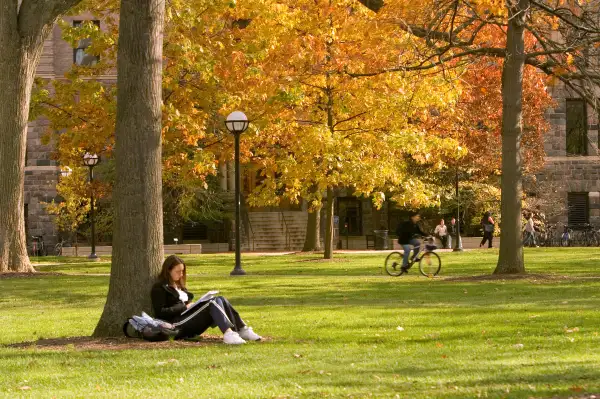The Payoff for a College Degree Is Smaller if You're a Low-Income Student

Is going to college still a good investment? Your field of study, career goals and personal life all play a role in the answer — as does your family’s income.
Amid the ongoing national discussion about the value of a college education, a new study from the Georgetown University Center on Education and the Workforce found that, in general, the return on investment of a college degree for students from low-income families tends to be less than the return on investment for other students.
Return on investment, or ROI for short, is a term that refers to the ratio of an investment’s net profit to its overall cost. The ratio is one way to measure the total value of an investment. In this case, Georgetown’s researchers define ROI as the earnings of a student over time minus the student’s cost of attendance.
The researchers found that ROI for low-income students across all degrees and majors is $756,000 over 40 years. For all students, that number jumps up to $822,000. The report considers students whose families earn less than $30,000 per year — a group that comprises more than a third of all college students — to be low-income. So while college does generally pay off for this group, the returns are higher for students from higher earning families.
The researchers offer a few explanations for the phenomenon. First, the ROI calculations are based on all students who attend a college, and as the authors note, graduation rates for low-income students tend to be lower than graduation rates for other students, in part because the financial stresses of college (which for lower-income students are more likely to include the demands of full-time work and childcare) are more extreme. And second, students who come from low-income families typically earn less as adults than their peers.
Public schools generate the highest ROI for low-income students
In general, the researchers found that lower-cost public schools tend to produce the highest earnings and ROI for low-income bachelor’s students. The 40-year ROI on a degree from a public institution for a low-income student is $951,000, the report found. The ROI on a bachelor’s degree from a private nonprofit school, on the other hand, is $863,000 — a difference of $88,000 over the 40-year timeframe.
Here are the public colleges with the highest 40-year ROIs for low-income students, according to the report.
- Maine Maritime Academy: $2.2 million
- Colorado School of Mines: $2.1 million
- California State University Maritime Academy: $1.9 million
- Georgia Institute of Technology: $1.9 million
- University of Virginia: $1.8 million
- SUNY Maritime College: $1.8 million
- College of William & Mary: $1.7 million
- University of California-Berkeley: $1.7 million
- University of Michigan-Ann Arbor: $1.7 million
- University of California-Los Angeles: $1.6 million
Of course, many private schools also generate outsize returns for low-income students. The 40-year ROI for a degree from Georgetown is $3.3 million, the report found, while the ROI at both Stanford University and Harvard University is $3 million. The report notes, however, that these private schools often enroll significantly fewer low-income students than their public counterparts, as measured by the share of their students receiving Pell Grants, which are awarded by the government to low-income students. About a third of undergraduates nationwide received Pell Grants for the 2018 school year, according to the report.
“Many of the colleges with the highest ROI for low-income students enroll relatively small shares of Pell Grant recipients,” Anthony P. Carnevale, the director of the Center on Education and the Workforce, said in a statement. “ROI is important, but students won’t get that ROI if they can’t go to these colleges.”
More from Money:
7 Tools That Give the Best Estimates for How Much College Will Really Cost Your Family
